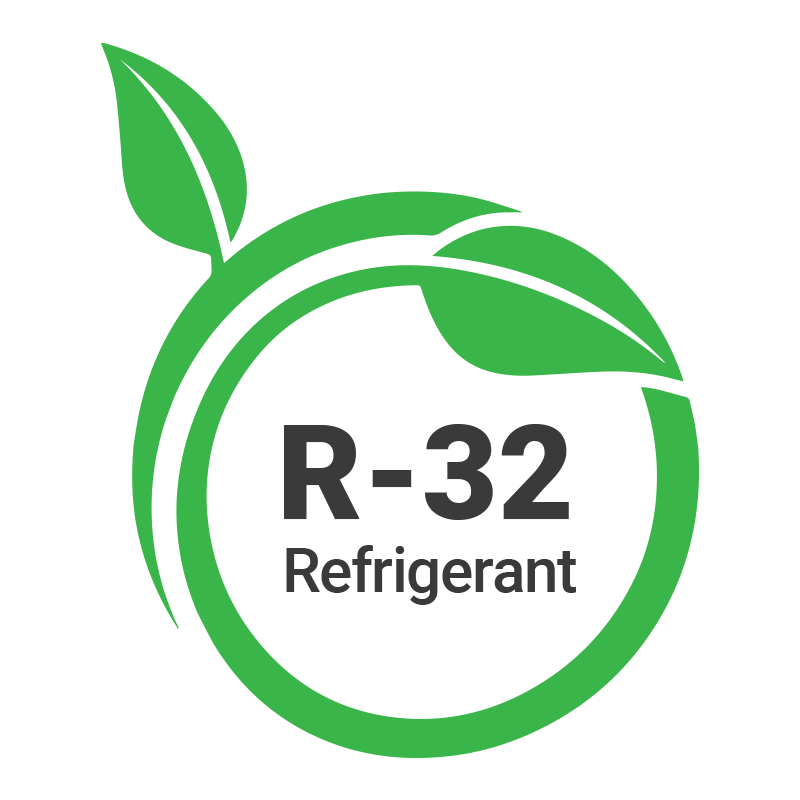

Making Sense of the A2L Refrigerant Transition: Embracing R-32
In response to global environmental concerns and evolving industry standards, HVAC equipment and related accessories worldwide are poised for a significant shift. For decades, R-410A has been the go-to refrigerant, widely used across the industry. However, as part of a global effort to reduce the environmental impact of hydrofluorocarbons (HFCs), we are starting to transition towards more eco-friendly alternatives.
Starting later this year, we are making a major move from R-410A to the more energy-efficient and environmentally friendly R-32 refrigerant. But why R-32? It's all about striking the right balance. With its lower Global Warming Potential (GWP) and improved energy efficiency, R-32 stands out among the new generation of A2L refrigerants.
We are here to help demystify what this change means, explore the benefits of R-32, and delve into how this transition impacts the HVAC equipment and tools we distribute. Our aim is to ensure that you have all the resources and support you need to navigate this industry evolution smoothly and confidently. As always, our team is just a call or click away, ready to answer your questions and assist you through this process.


The Benefits of R-32 Refrigerant
When it comes to a sustainable, efficient refrigerant solution in the HVAC industry, R-32 stands out significantly in the new generation of A2L-class refrigerants with key benefits that make R-32 a clear leader.


Environmental Impact and GWP
The Global Warming Potential (GWP) is a measure of how much heat a greenhouse gas traps in the atmosphere within a certain period, compared to carbon dioxide. The lower the GWP, the less potential the gas has to contribute to global warming.
With a GWP of 675, R-32 provides remarkable environmental advantages compared to commonly used Hydrofluorocarbon (HFC) refrigerants such as R-410A, which has a GWP value of 2088.
This means that over a 100-year period, each kilogram of R-410A released to the atmosphere has the same warming effect as 2088 kilograms of carbon dioxide, compared to 675 of R-32.


Energy Efficiency and IEER
The Integrated Energy Efficiency Ratio (IEER) measures the average efficiency of an AC unit when it operates at varying conditions, not just at full capacity. R-32 has demonstrated to improve the IEER at nominal capacity, signifying it as a more energy-efficient option. Specifically, Daikin has found that using R-32 improved the IEER of a tested inverter compressor rooftop unit by 8% as compared to a unit with R-410A.


Simplified Implementation
R-410A is a blended refrigerant. That means it's a mixture of two or more different refrigerants, specifically a mix of R-32 (Difluoromethane) and R-125 (Pentafluoroethane) in a 50/50 ratio. These two refrigerants work together to achieve desirable thermodynamic properties in the air conditioning system.
R-32 is a single-component refrigerant, making it easier to reuse and recycle, offering an added advantage in terms of environmental sustainability.
One of the advantageous aspects of R-32 being a single-component refrigerant is that it does not fractionate - that is, the components do not separate - during a refrigerant leak. This means that its composition remains constant even when it leaks, which simplifies the process of charging and maintaining HVAC systems using this refrigerant.
Comparing R-32 to Other A2L Refrigerants:
The R-454B Example
To spotlight the advantages of R-32, let's compare it
to another A2L refrigerant, R-454B:


GWP
R-32's total emissions are 13.6% lower than R-410A and even compared to R-454B, R-32 still delivers an environmentally friendly performance.
While R-454B has a GWP of approximately 466, R-32's performance and operating characteristics are very similar to R-410A, which can make it easier for manufacturers and service technicians to design and work with R-32 systems. Furthermore, Daikin's test results show that when using Life Cycle Climate Performance (LCCP) analysis, which considers charge size, efficiency, and capacity, R-32 has a slight advantage over R-454B.


IEER
In comparative testing, the use of R-32 improved the IEER at nominal capacity by 11% compared to R-454B, further highlighting its energy-efficient nature.


Implementation
Unlike R-454B, which is a blend made up of nearly 70% R-32, R-32 is simpler to implement due to its single component structure.
